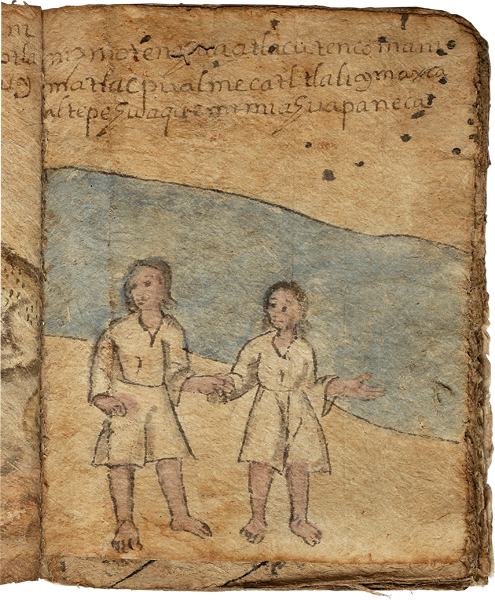f. 13r., Atlacutenco
Translations and Transcriptions
Spanish Translation
[f. 13r., Nahuatl-to-Spanish translation by Florencio Barrera:] Aquí en el lugar que se llama Atlacutenco se extienden 200 mecates de tierra, propiedad de los habitantes del pueblo de Mimiapan
English Translation
[f. 13r., Nahuatl-to-English translation by Stephanie Wood:] Here at [the place] called Atlacutenco there are 200 cords [mecatl in Nahuatl; mecates in Spanish] of land, property of the inhabitants of the town, the people of Mimiahuapan.
Analytic Transcription
[f. 13r., Transcription of the Nahuatl by Florencio Barrera:] niz motenehua atlacutenco mani matlacpual mecatl tlali ymaxca altepehuaque mimiahuapaneca
Image

Spanish Translation
[f. 13r., Nahuatl-to-Spanish translation by Florencio Barrera:] Aquí en el lugar que se llama Atlacutenco se extienden 200 mecates de tierra, propiedad de los habitantes del pueblo de Mimiapan
English Translation
[f. 13r., Nahuatl-to-English translation by Stephanie Wood:] Here at [the place] called Atlacutenco there are 200 cords [mecatl in Nahuatl; mecates in Spanish] of land, property of the inhabitants of the town, the people of Mimiahuapan.
Analytic Transcription
[f. 13r., Transcription of the Nahuatl by Florencio Barrera:] niz motenehua atlacutenco mani matlacpual mecatl tlali ymaxca altepehuaque mimiahuapaneca
Image
